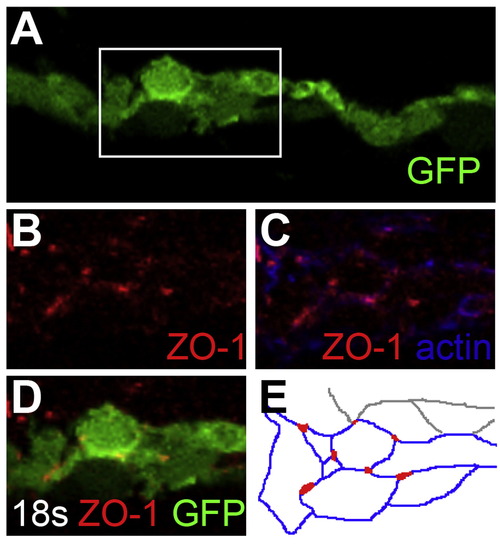Fig. S2
|
Cell?cell junctions are properly localized in wild-type endocardial cells that are stacked on top of one another. (A?D) Transverse section of wild-type endocardium, dorsal to the top, at 18s. Immunofluorescence detects localization of ZO-1 (red) (B?D) and F-actin (blue) (C); in addition, an anti-GFP antibody allows visualization of Tg(kdrl:GRCFP) expression (green) in the endocardium (A and D). The boxed area in (A) is highlighted in (B?D). Even when wild-type cells are stacked on top of each other, ZO-1 is properly localized to individual vertices at cell-cell junctions (B?D), rather than being found in large patches as in tal1-deficient embryos (Fig. 6E, F, and H). (E) Cartoon indicates regions of ZO-1 (red) and F-actin (blue) localization within the endocardium. |
Reprinted from Developmental Biology, 383(2), Schumacher, J.A., Bloomekatz, J., Garavito-Aguilar, Z.V., and Yelon, D., tal1 regulates the formation of intercellular junctions and the maintenance of identity in the endocardium, 214-226, Copyright (2013) with permission from Elsevier. Full text @ Dev. Biol.

